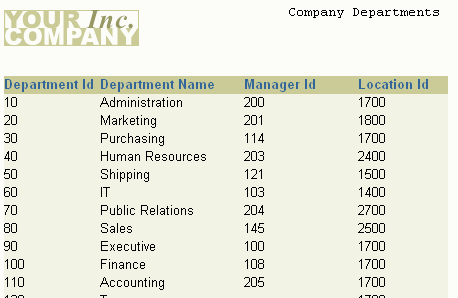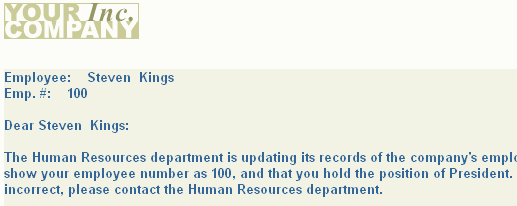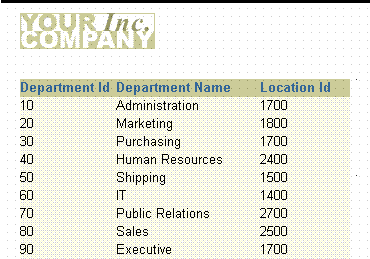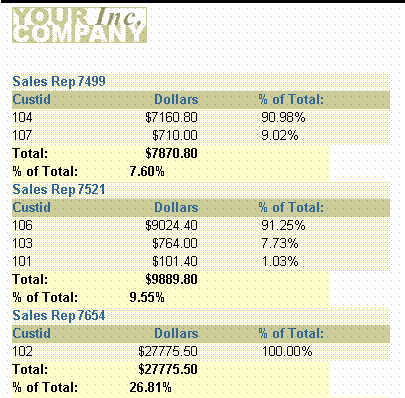| Oracle® Fusion Middleware Oracle Reports User's Guide to Building Reports 11g Release 1 (11.1.1) Part Number B32122-02 |
|
|
PDF · Mobi · ePub |
| Oracle® Fusion Middleware Oracle Reports User's Guide to Building Reports 11g Release 1 (11.1.1) Part Number B32122-02 |
|
|
PDF · Mobi · ePub |
This part of the manual introduces and explains the basic steps on how you can build reports.
In this example, you will use the Report Wizard to build a simple tabular report.
Figure 3-1 Final output of the tabular report example

For more information on building this example, refer to Chapter 5, "Building a Tabular Report".
In this example, you will use the Report Wizard to build a simple mailing label report. The steps will show you how to fill out the provided template to format your mailing labels.
Figure 3-2 Final output of the mailing label report example

For more information on building this example, refer to Chapter 6, "Building a Mailing Label Report".
In this example, you will use the Report Wizard to build a simple form letter report. The steps will show you how to fill out the provided template to design your form letter.
Figure 3-3 Final output of the form letter example

For more information on building this example, refer to Chapter 7, "Building a Form Letter Report".
In this example, you will learn how to build a master/master report, which displays at least two sets of data which are not directly related. That is, the records constituting the data are fetched using at least two separate queries. A master/master report (also called a parent/parent report) contains two or more queries with no links (parent/child relationships).
Figure 3-4 Final output of the first master/master report example

Figure 3-5 Final output of the second master/master report example

For more information on building this example, refer to Chapter 8, "Building a Master/Master Report".
In this example, you will learn how to use the Summary Column tool to create a summary report.
A summary report contains at least one column whose value or values consist of a summary of other data. A column that totals sales, a column that averages a list of commissions, and a column that shows the maximum amounts found in a series of purchase orders are all examples of summary columns.
Figure 3-6 Final output of the summary report example

For more information on building this example, refer to Chapter 9, "Building a Summary Report".